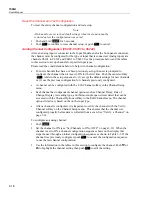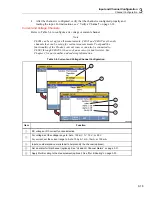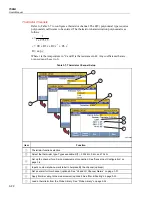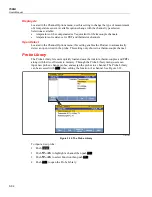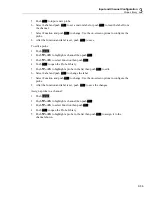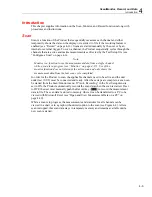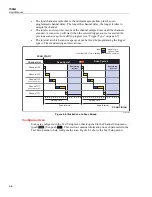
Input and Channel Configuration
Channel Configuration
3
3-27
Math Channel Configuration (Ch501 to Ch520)
The Product has 20 math channels that lets the user apply a math conversion to a single
channel or to a range of channels through the use of preset math functions. Table 3-10
lists the math functions available for use.
Math channels are commonly used to combine the measurement values then display them
as one number without the need to manually calculate the values. Like all other channels,
math channels can be scanned and recorded.
Another use of the math channels is to apply a math conversion to a single channel that is
more advanced than Mx+B scaling. For example, a more accurate conversion of an
output of a transducer to a physical parameter.
More complicated expressions can be made with a math channel that uses the
calculations from two other math channels. For example, a math channel could be
configured to calculate the exponential function of another math channel that is
configured to calculate a polynomial function of an input channel.
Table 3-10. Math Channel Formulas
Formula Equation
Description
Polynomial
C
6
A
6
+ C
5
A
5
+ C
4
A
4
+ C
3
A
3
+ C
2
A
2
+ C
1
A + C
0
Calculates a polynomial expression of up to sixth order.
Coefficients may be set to arbitrary constants. A
polynomial of order less than six is created by setting
high order coefficients to 0.
Square Root
A
Calculates the square root function. The argument must
be a positive number, otherwise the result will be "+OL"
(over limit).
Power A
x
Calculates the power of the variable. The exponent can
be a noninteger number but the result will be "+OL" if the
argument is negative.
Exponential e
A
Calculates the exponential function of a variable, where
e is 2.718.
Log10 Log10(A)
Calculates the logarithm, base 10, of a variable. The
argument must be positive or the result will be "+OL".
This formula is helpful when used with an Mx+B scale
factor of 20 to convert a reading to decibels.
|A| ABS(A)
Calculates the absolute value of a variable, converting a
value to a positive number if it happens to be negative.
The absolute value function can be useful to ensure that
the argument to another math channel is always positive.
Summary of Contents for 1586A
Page 6: ...1586A Users Manual iv Error Messages 7 3 Troubleshooting 7 20...
Page 8: ...1586A Users Manual vi...
Page 10: ...1586A Users Manual viii...
Page 34: ...1586A Users Manual 2 2...
Page 42: ...1586A Users Manual 2 10 2 3 4 1 hcn018 eps Figure 2 6 Relay Card Installation...
Page 44: ...1586A Users Manual 2 12 hcn032 eps Figure 2 7 DAQ STAQ Multiplexer Installation...
Page 46: ...1586A Users Manual 2 14...
Page 48: ...1586A Users Manual 3 2...
Page 82: ...1586A Users Manual 3 36...
Page 84: ...1586A Users Manual 4 2...
Page 108: ...1586A Users Manual 5 2...
Page 114: ...1586A Users Manual 6 2...
Page 118: ...1586A Users Manual 6 6...
Page 120: ...1586A Users Manual 7 2...






